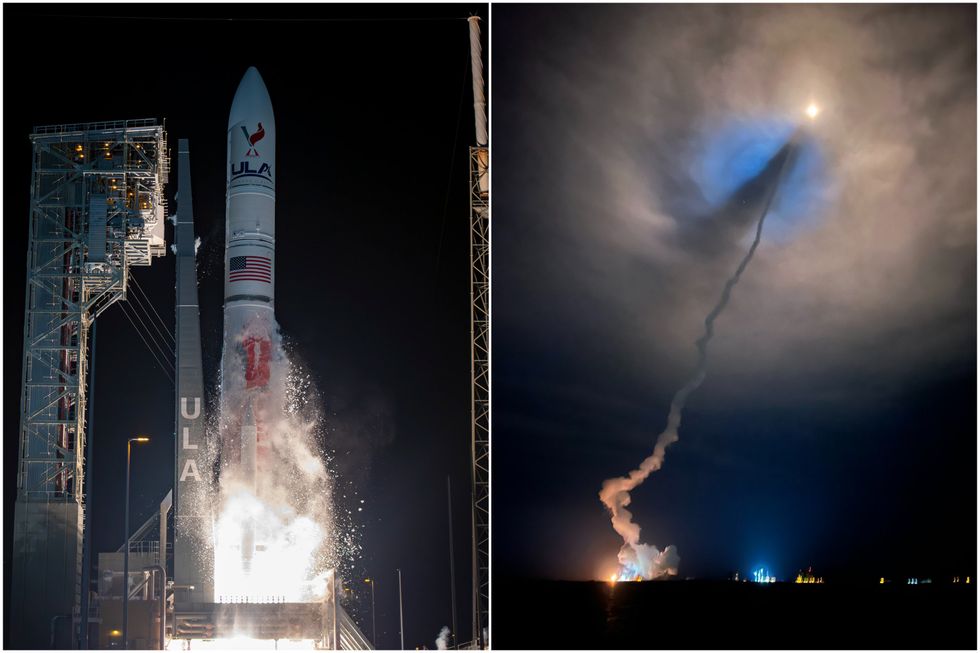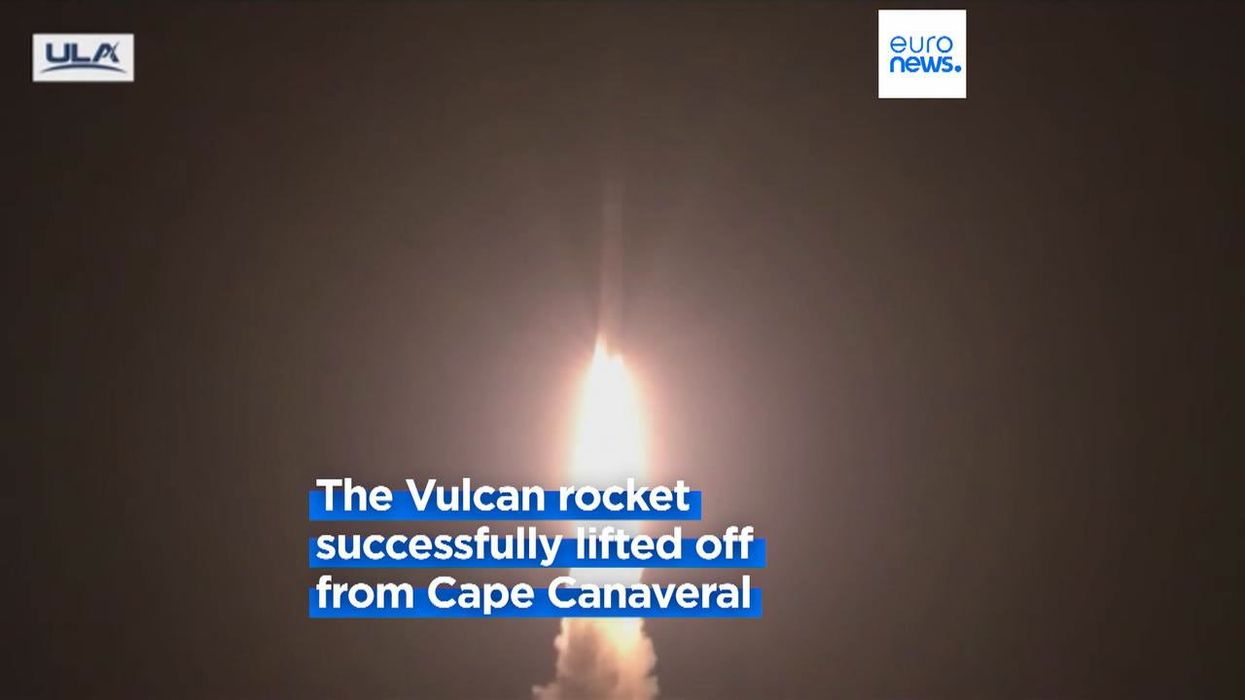Science & Tech
Harriet Brewis
Jan 09, 2024
Peregrine 1: First US lunar lander in more than 50 years rockets …
Euronews Business / VideoElephant
Most of us can only dream of visiting space during our lifetime, but now more than 300 people have managed to do so after their death.
On Monday, Texas-based company Celestis Inc. waved off its inaugural Enterprise Flight from Cape Canaveral, Florida, which included the remains of a whole constellation of stars.
Stars in the celebrity sense, that is. Because contained within 330 titanium capsules were ashes or DNA samples belonging to the likes of John F. Kennedy, George Washington and ‘Star Trek’ creator Gene Roddenberry.
An anonymous donor contributed hair samples from the two former presidents, while the partial remains of late ‘Star Trek’ cast member, including James ‘Scotty’ Doohan were also on board.
In fact, Celestis named the groundbreaking flight Enterprise in honour of Roddenberry, whose wife, the late actress Majel Barrett Roddenberry, dreamed that she and her husband would one day make it into deep space.
“We flew Gene on our very first mission in 1997 and Majel came to be a part of it, and she said to me, ‘When it’s my time, I’d like you to fly Gene and I together on a deep space mission,” Celestis Co-Founder and CEO Charles M. Chafer told the New York Post.
“And me, being 28 years old at the time and having no reason to believe we couldn’t do it, I said, ‘I would be happy to do that.’”

He continued: “So not only is the launch a culmination of all our work to date — it represents the fulfilment of a promise that I made.
“The mission is named Enterprise in tribute to them - and also fellow mission participant and beloved actor, James ‘Scotty’ Doohan - as well as the many Star Trek fans who are joining them on this, the 20th Celestis Memorial Spaceflight.”
The mission marks the first time human remains are set to be released on the Moon and beyond by a commercial company.
Blasted off by the United Launch Alliance’s two-stage Vulcan Centaur rocket, the first part of the mission is due to see the first 62 of the capsules dropped down onto the Moon, via a 6-foot-tall, lunar lander called the Peregrine.
The rocket will then take the remaining 268 capsules some 185 million miles into deep space, where they will “orbit the sun forever,” Chafer said.
“I’ve had a lot of firsts in my career, but this will be the first commercial deep space mission ever done — and hopefully it will be the first of many, many more over the next few centuries,” he told the Post.

And yet, the fate of the mission has come into question following reports that the Peregrine will not make it to the Moon.
A statement shared on Tuesday morning by Astrobotic, the company that created the lander, revealed that a fuel leak was causing critical issues and that they were losing control of the craft.
Admitting that a touch-down on the lunar surface would no longer be possible, they added: "At this time the goal is to get Peregrine as close to lunar distance as we can before it loses the ability to maintain its Sun-pointing position and subsequently loses power.”
It’s not clear which of the distinguished, posthumous travellers were destined for this trip to the Moon, but indy100 has contacted Celestis for more information about the status of the mission.
Still, according to the company’s website, the spaceflight is “complete.”
Sign up for our free Indy100 weekly newsletter
Have your say in our news democracy. Click the upvote icon at the top of the page to help raise this article through the indy100 rankings
Top 100
The Conversation (0)














